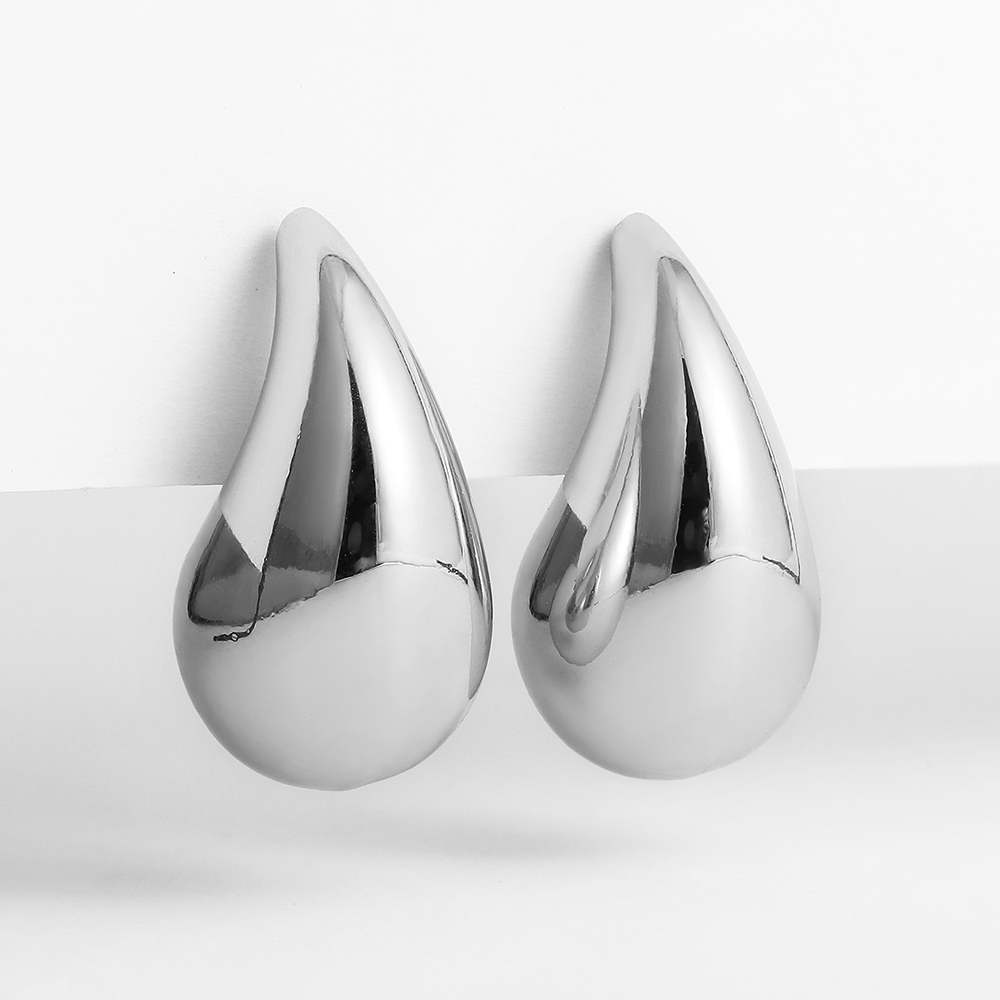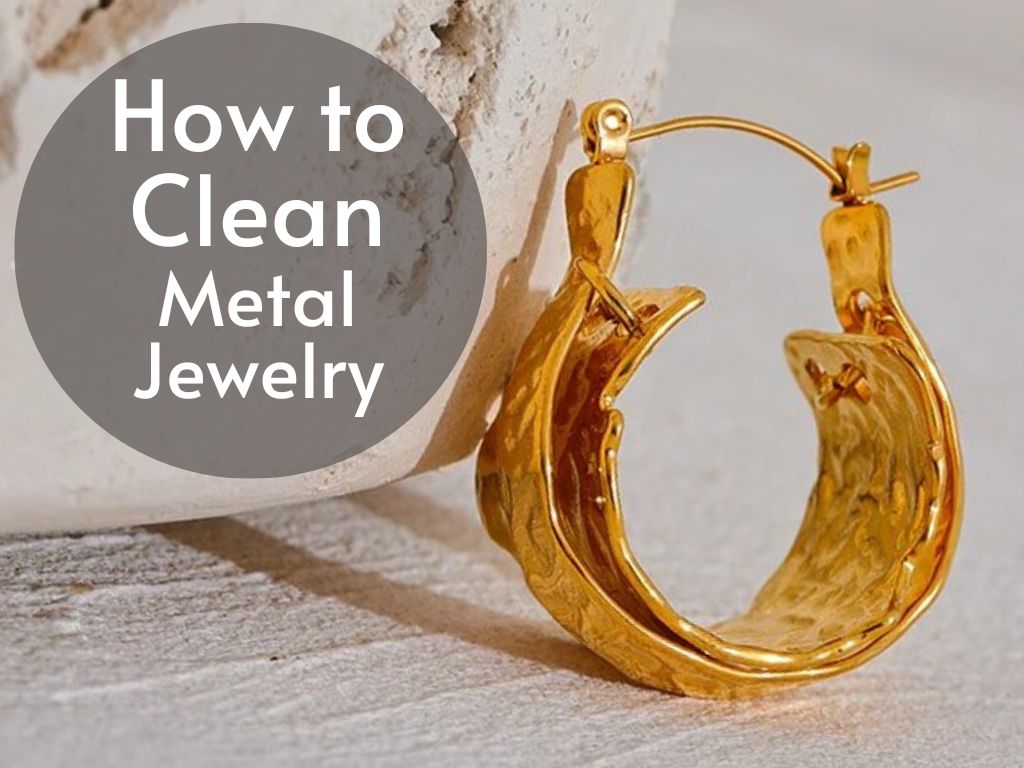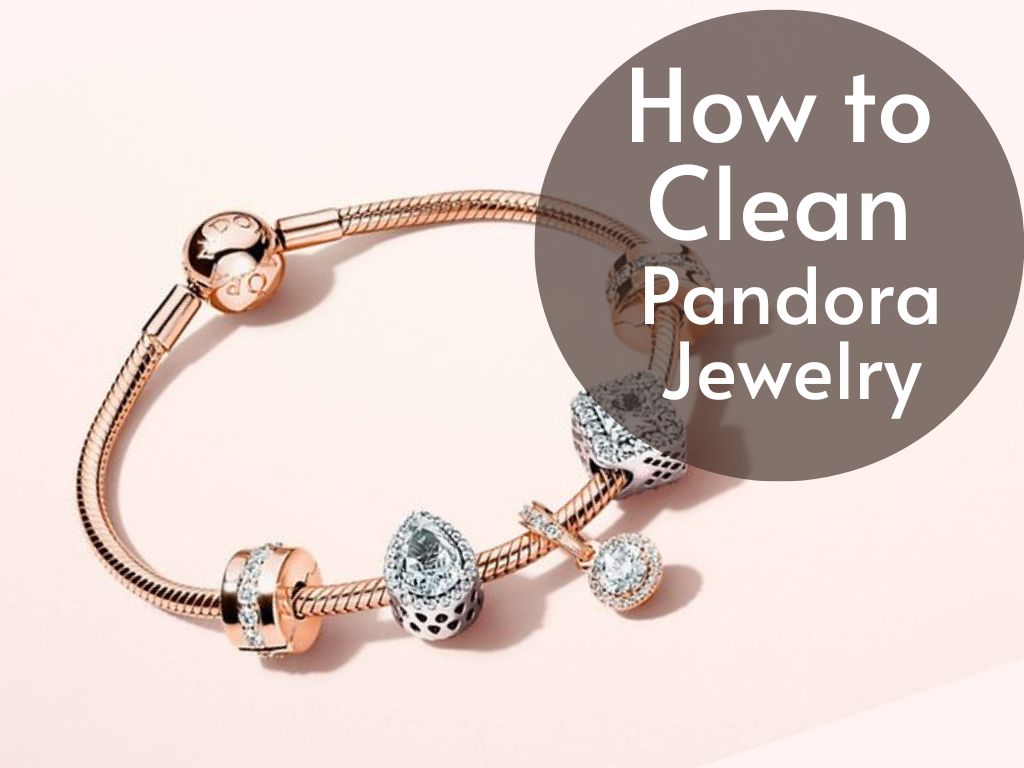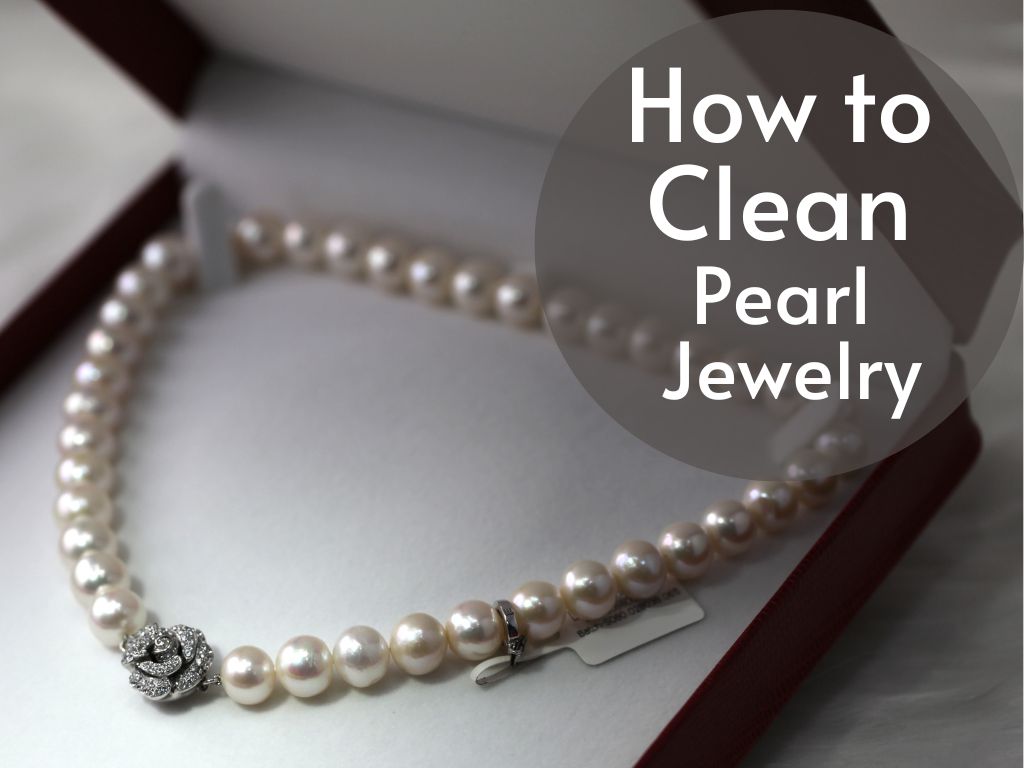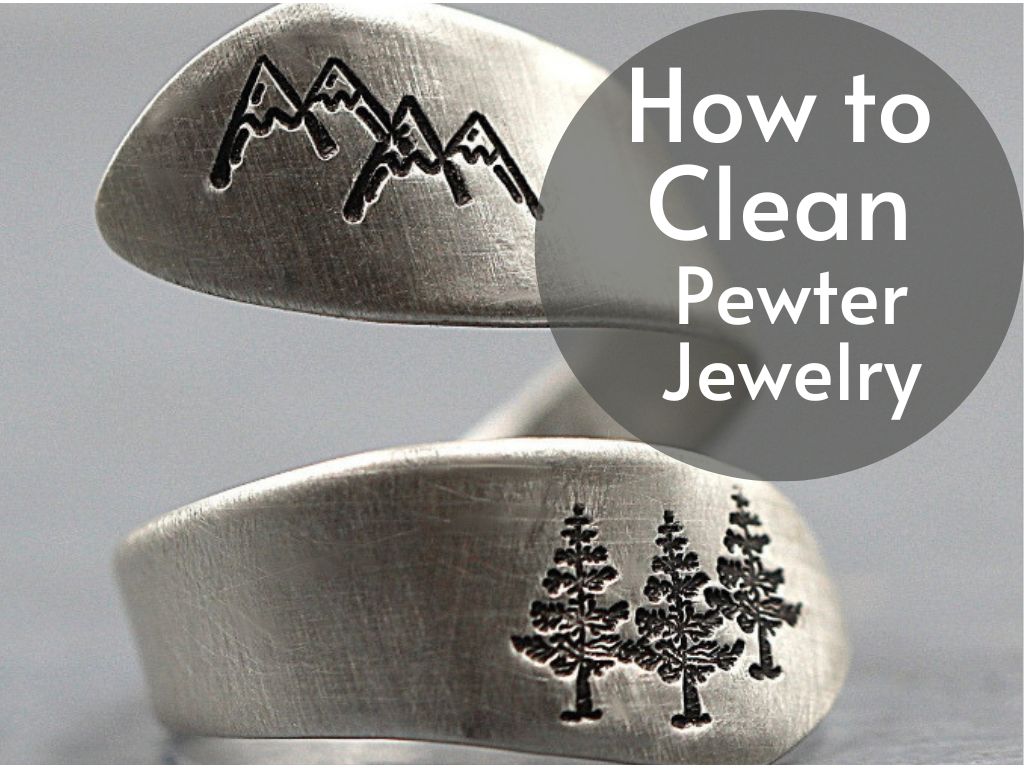Welcome to the world of stainless steel jewelry care! In recent years, stainless steel jewelry has gained immense popularity due to its sleek and contemporary appearance. It offers a durable and affordable alternative to precious metals like gold or platinum.
Stainless steel is resistant to tarnish, scratches, and rust, making it an excellent choice for everyday wear. Whether you own a trendy bracelet, a chic necklace, or elegant earrings, regular cleaning is essential for maintaining its shine and luster.
Brief Overview of the Popularity and Durability of Stainless Steel Jewelry
Stainless steel jewelry has revolutionized the fashion industry with its contemporary designs that effortlessly blend style and durability. What was once primarily used in industries such as aerospace and medical fields for its strength and resistance to corrosion has now become a fashion statement for many.
The versatility of stainless steel allows designers to create intricate patterns, bold shapes, and even incorporate gemstones into their designs. Another reason behind the popularity of stainless steel jewelry is its affordability without compromising on quality.
Compared to precious metals like gold or silver, which come with hefty price tags due to their scarcity, stainless steel provides an accessible option that doesn’t break the bank. It allows individuals from all walks of life to express their personal style without sacrificing on durability or aesthetics.
Importance of Regular Cleaning to Maintain its Shine and Luster
To keep your stainless steel jewelry looking as good as new for years to come, regular cleaning plays a crucial role. Over time, dirt particles, oils from your skin, lotions, perfumes can accumulate on the surface of your jewelry causing it to appear dull or lose its shine altogether. By incorporating a simple cleaning routine into your maintenance regimen, you can easily restore your stainless steel pieces’ original elegance.
In addition to restoring its visual appeal, regular cleaning helps preserve the luster of stainless steel jewelry. The buildup of dirt and grime not only affects its appearance but can also impact the metal’s ability to reflect light.
By removing these unwanted substances, you allow the stainless steel to regain its natural radiance, enhancing its overall beauty. Moreover, regular cleaning helps prevent potential long-term damage to your stainless steel jewelry.
Certain substances, such as household cleaning agents or chlorinated water, can corrode or tarnish the metal if left untreated for extended periods. By adopting a consistent cleaning routine, you minimize the risks of irreversible damage and ensure your jewelry lasts for generations.
Understanding Stainless Steel Jewelry
Composition and Properties of Stainless Steel
Stainless steel jewelry is crafted using an alloy composed primarily of iron, chromium, and carbon. The addition of chromium enhances its corrosion resistance properties, making it ideal for jewelry that can withstand daily wear and exposure to various elements.
The carbon content contributes to its strength and durability. Other elements such as nickel, manganese, or molybdenum may be added to enhance specific characteristics.
Stainless steel possesses remarkable qualities that make it a popular choice in the world of jewelry. It is highly resistant to tarnish, rust, and discoloration, making it suitable for long-term use.
Additionally, stainless steel is hypoallergenic as it does not contain nickel in certain grades. This makes it an excellent alternative for individuals with sensitive skin or metal allergies.
Different Types of Finishes Commonly Used in Stainless Steel Jewelry
Stainless steel jewelry offers a diverse range of finishes that add uniqueness and appeal to each piece. These finishes alter the surface appearance of the metal while also enhancing its durability. 1. Polished Finish: This classic finish gives stainless steel jewelry a glossy and mirror-like surface, creating a sophisticated aesthetic appeal.
The polishing process involves smoothing out any imperfections on the surface using abrasive materials until achieving a high shine. 2. Brushed Finish: A brushed finish provides a textured appearance characterized by fine parallel lines running across the metal’s surface.
Achieved through brushing or sanding with abrasive pads or brushes, this finish creates a matte effect that reduces visible scratches over time. 3. Satin Finish: Similar to a brushed finish but with smaller and more closely spaced lines on the metal’s surface, the satin finish delivers an elegant yet subtle sheen.
Achieved through sanding with fine-grit abrasive materials, this finish adds depth and sophistication to stainless steel jewelry. 4. Hammered Finish: This rustic and organic finish involves using specialized tools to create a textured surface reminiscent of hammered metal.
The result is a unique piece of jewelry that showcases an artisanal touch and adds visual interest. Understanding the composition and finishes of stainless steel jewelry allows you to appreciate the craftsmanship behind each piece while also aiding in its proper care and maintenance.
Preparing for Cleaning
Gathering necessary supplies
Before delving into the cleaning process, it is crucial to ensure that you have all the necessary supplies at hand. To clean stainless steel jewelry effectively, gather a soft cloth, mild soap, warm water, a soft-bristle toothbrush, a microfiber cloth, and a polishing cloth. Each of these items plays a significant role in achieving optimal results.
The soft cloth will be used to wipe away loose dirt and debris from the jewelry’s surface before cleaning. Opt for a lint-free fabric or microfiber cloth to avoid leaving any residue behind.
Mild soap is gentle yet effective in removing oils and grime without damaging the stainless steel. Choose a soap that is free of harsh chemicals or abrasives.
Warm water acts as the ideal medium for dissolving oils and lifting dirt particles from your precious jewelry pieces. It is preferable to use lukewarm water as extreme temperatures can potentially damage certain finishes or gemstones in your stainless steel jewelry collection.
The soft-bristle toothbrush comes in handy for reaching intricate designs and hard-to-reach areas such as small crevices or chain links. Obtain both a microfiber cloth and a dedicated polishing cloth for drying and restoring shine respectively.
The microfiber cloth is excellent at absorbing moisture without leaving any streaks or marks on your jewelry’s surface. On the other hand, using a specialized polishing cloth specifically designed for stainless steel ensures safe removal of stubborn fingerprints and restores its original luster.
Creating a safe cleaning environment
To prevent accidental damage or loss during the cleaning process, it is essential to establish a safe environment for handling your precious stainless steel jewelry pieces. One way to achieve this is by covering your sink with a clean towel before beginning the cleaning process. By covering the sink’s surface with a towel, you create an extra layer of protection against potential slips and falls that could cause jewelry to be lost or damaged down the drain.
Additionally, covering the sink helps to minimize the likelihood of scratching or scuffing your stainless steel jewelry against the hard surfaces of sinks. Alternatively, you can also opt to use a small basin specifically designated for cleaning jewelry.
This ensures complete control over your environment and minimizes any potential risks associated with using a sink. A small basin allows you to focus solely on cleaning your stainless steel jewelry without any distractions, reducing the chances of unwanted accidents.
By taking these precautions, you create an environment that prioritizes both safety and care when it comes to handling and cleaning your stainless steel jewelry. With the necessary supplies gathered and a safe cleaning environment established, you are now ready to tackle the process of restoring your precious pieces back to their sparkling brilliance.
Basic Cleaning Steps
Rinse the jewelry with warm water to remove any loose dirt or debris.
To begin the cleaning process, take a moment to rinse your stainless steel jewelry under warm running water. This initial step helps eliminate any surface dirt or debris that may have accumulated on the jewelry.
By rinsing it off, you ensure that you won’t inadvertently scratch the surface during the subsequent cleaning steps. Gently swish the piece around in your hands, allowing the water to flow over it and wash away any loose particles. Create a soapy solution by mixing mild soap with warm water in a small bowl.
Once you have rinsed off any loose dirt, it’s time to prepare a gentle cleaning solution using mild soap and warm water. Fill a small bowl or basin with warm water and add just a few drops of mild soap. Be sure to choose a soap that is free from harsh chemicals or abrasives to prevent damage to your stainless steel jewelry. Gently scrub the jewelry using a soft cloth or soft-bristle toothbrush dipped in the soapy solution.
Dip either a soft cloth or a soft-bristle toothbrush into the soapy solution you prepared earlier. Carefully scrub your stainless steel jewelry, focusing on areas where dirt or grime may be more concentrated. When applying pressure, use gentle circular motions to avoid scratching the surface of your precious adornments.
It’s essential to select an appropriate tool for cleaning based on the intricacy and size of your jewelry pieces. Soft cloths work well for larger surfaces, while toothbrushes can be handy for reaching into crevices and tackling stubborn spots. Pay attention to hard-to-reach areas and intricate designs while scrubbing.
Stainless steel jewelry often boasts intricate designs, such as etchings, engravings, or delicate patterns. While scrubbing, make sure to pay special attention to these areas.
Take your time and be meticulous in your approach, using the soft cloth or toothbrush to reach every nook and cranny without causing any damage. By giving close attention to the intricate details, you can ensure that your jewelry will emerge from the cleaning process looking fresh and rejuvenated. Rinse thoroughly under warm running water to remove all traces of soap.
Once you have gently scrubbed the jewelry, it’s crucial to rinse it thoroughly under warm running water. This step is essential in removing all traces of soap from both visible surfaces and hidden crevices. The warmth of the water aids in rinsing away any remaining dirt or residue that might cling to the jewelry after cleaning.
Hold the piece under the running water for a sufficient amount of time, ensuring that there are no soapy suds left behind. Pay extra attention to areas where soap may accumulate, such as in between links or around charms or pendants.
Complete rinsing guarantees that no soap residue will dry onto the surface of your stainless steel jewelry, leaving it sparkling clean and ready for further maintenance steps. By following these basic cleaning steps diligently, you can maintain the beauty and shine of your stainless steel jewelry pieces for years to come.
Dealing with Stubborn Stains or Tarnish
Light Tarnish: Creating a Baking Soda Paste
When it comes to dealing with light tarnish on your beloved stainless steel jewelry, creating a simple and effective baking soda paste can work wonders. Baking soda, also known as sodium bicarbonate, is a gentle abrasive that helps remove stains and restore the shine of stainless steel.
To create the paste, start by mixing equal parts baking soda and water in a small bowl until it forms a thick consistency. Once you have your baking soda paste ready, take a soft cloth or toothbrush and apply the paste onto the stained areas of your jewelry.
Gently rub in circular motions, ensuring you cover every stain or tarnished spot thoroughly. The circular motion helps loosen and lift any dirt or discoloration without causing scratches or damage to the surface of your jewelry.
Rinsing off the Paste
After gently rubbing the baking soda paste onto your stainless steel jewelry, it’s crucial to rinse off any residue thoroughly. Begin by holding your jewelry under warm running water, allowing it to flow over every nook and cranny of each piece. Make sure all traces of the baking soda paste are washed away before proceeding to dry your jewelry.
While rinsing, take extra care to ensure that there are no remaining soap residues on your pieces as this can lead to dullness or streaks on the surface. A thorough rinse will guarantee that all particles from both the baking soda paste and any loosened stains are completely removed from your precious stainless steel jewelry.
Drying with Precision using a Microfiber Cloth
After rinsing off any residue from your stainless steel jewelry, drying it properly is vital for preventing water spots and maintaining its pristine appearance. To achieve this, use a soft microfiber cloth specifically designed for delicate surfaces. Gently pat each piece, ensuring that all moisture is absorbed and no water spots are left behind.
It’s important to note that using a regular towel or harsh fabrics may cause scratches or leave lint on your jewelry. Opting for a high-quality microfiber cloth ensures that your stainless steel pieces are handled with care and dried to perfection, leaving them gleaming and ready to be worn or stored safely.
By following these steps for dealing with stubborn stains or tarnish on your stainless steel jewelry, you can rejuvenate its beauty and preserve its shine for years to come. The gentle yet effective nature of the baking soda paste, coupled with thorough rinsing and precise drying techniques using a microfiber cloth, guarantees remarkable results without compromising the integrity of your cherished accessories.
Polishing Stainless Steel Jewelry
A Use a specialized stainless steel polishing cloth to restore shine and remove fingerprints.
After cleaning your stainless steel jewelry, it’s time to bring back its captivating shine. The first step is to acquire a specialized stainless steel polishing cloth.
These cloths are specifically designed to remove smudges, fingerprints, and minor scratches while enhancing the luster of your jewelry. Avoid using regular abrasive cloths or rough materials as they may cause more harm than good.
B Gently rub the surface of the jewelry in straight lines until desired shine is achieved.
When utilizing a stainless steel polishing cloth, follow these simple steps to achieve optimal results. Start by holding the jewelry piece firmly but gently with one hand. With the other hand, use the polishing cloth to rub the surface of the jewelry in straight lines.
Apply light pressure while maintaining a consistent motion throughout. Remember that patience is key during this process; repeat these gentle rubbing motions until you achieve your desired level of shine.
Be sure to focus on areas prone to fingerprints or dullness, such as clasps and intricate details. For larger pieces or bracelets, consider working on one section at a time for better control and efficiency.
Conclusion
Cleaning and maintaining your stainless steel jewelry not only keeps it looking beautiful but also preserves its longevity and value over time. By following proper cleaning techniques using mild soaps and specialized tools like soft cloths or toothbrushes, you can effectively remove dirt, grime, and tarnish from your jewelry without causing any damage. Additionally, using a stainless steel polishing cloth adds that final touch of brilliance by restoring shine and eliminating fingerprints.
Regular cleaning and polishing will ensure your jewelry continues to sparkle for years to come, making each piece a source of pride and joy. So, take the time to care for your stainless steel jewelry, like you would any precious possession.
Embrace the ritual of cleaning and polishing, marvel at the gleaming results, and relish in the knowledge that you’re doing everything possible to maintain its beauty. Your stainless steel jewelry will reward you with its enduring charm and be a constant reminder of your impeccable taste.

